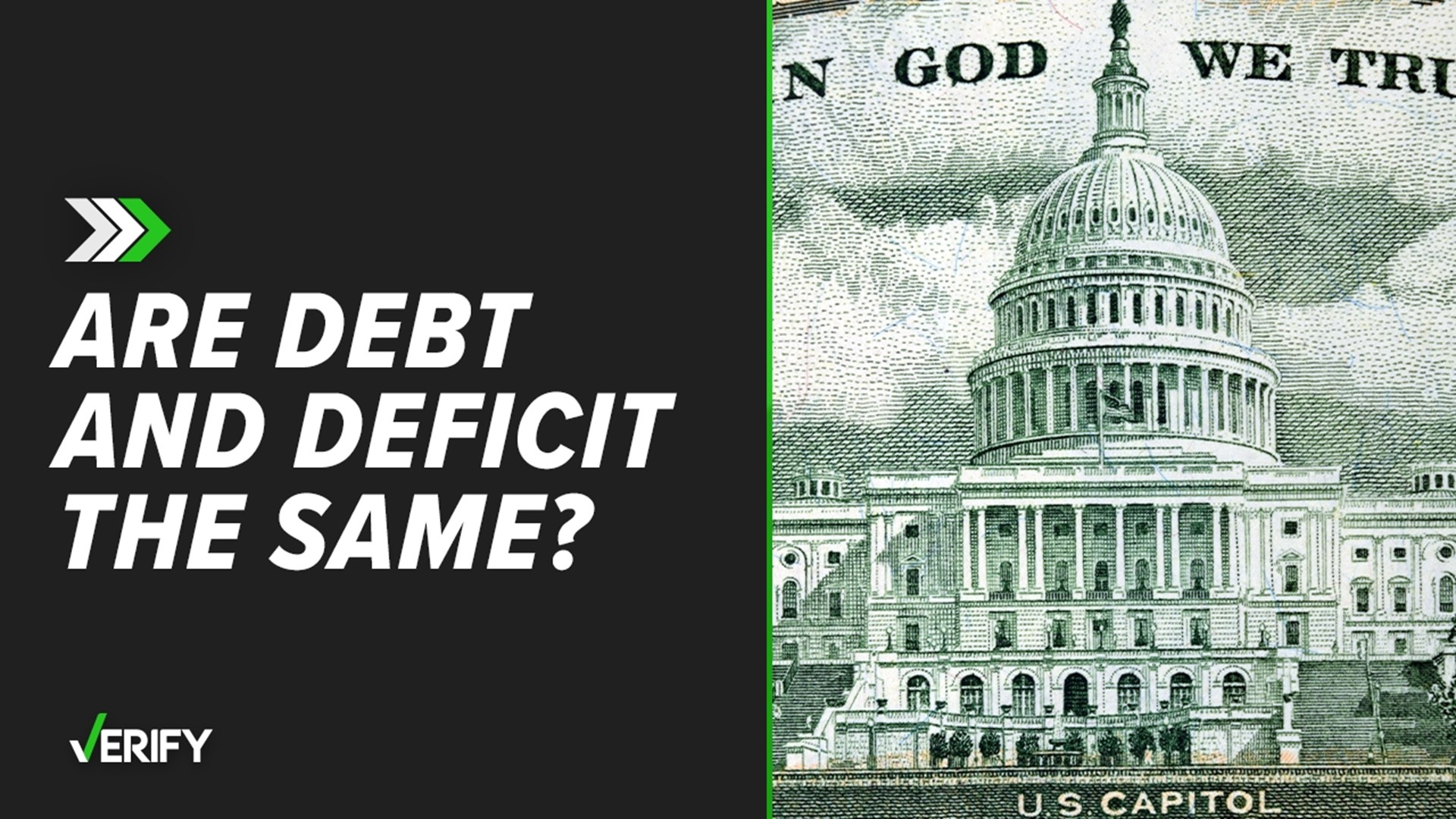Time is running out for Congress to raise the federal debt ceiling and prevent the United States government from defaulting on its financial obligations – an event economists agree would have catastrophic consequences for the economy.
The looming deadline has pushed debates about how to handle the debt and national deficit to center stage; it was even a highlight of President Biden’s State of the Union address.
Some VERIFY viewers have expressed confusion about the difference between the debt and the deficit, given they’re similar words about similar concepts.
THE QUESTION
Are the debt and the deficit the same thing?
THE SOURCES
THE ANSWER
No, the debt and the deficit are not the same thing.
WHAT WE FOUND
The deficit is a matter of the federal budget, authorized yearly by Congress. If the government spends more than it takes in, that difference is the deficit.
According to the U.S. Treasury Department, the deficit for the last fiscal year, 2022, was $1.38 trillion. The 2023 fiscal year began in October, and so far the deficit this year is $460 billion.
When the government runs a deficit, it still needs to pay its bills. To do that, it borrows money. That creates debt.
Every time the government borrows money, that adds to the debt the U.S. already has, meaning the debt will continue to grow over time, as long as the government continues to run a deficit with each annual budget.
When the government borrows money, it has to pay it back with interest. The longer that takes, the larger the interest payments get, further growing the national debt.


The deficit is calculated for a specific period of time – typically a fiscal year. The debt, however, is cumulative. In other words, if Congress passed a balanced budget, the deficit would be erased, but the debt would remain.
According to the U.S. Treasury Department, the national debt currently sits at $31.5 trillion.

